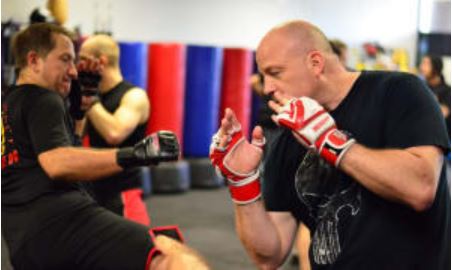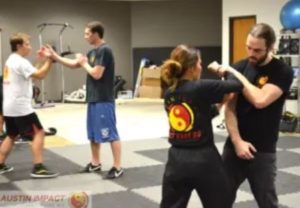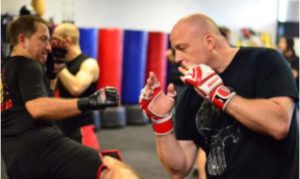I remember reading an old Jack Dempsey Boxing book (one of Bruce Lee’s favorites, and a big influence on the Jeet Kune Do Lead Straight punch) and in it Dempsey was talking about this new boxing style in which the boxer would slip and weave punches to get inside on his opponent.
It’s funny to read that now, when good head movement is a staple part of any skilled boxer’s repertoire.
Head movement can pose a little more risk for a kickboxing practitioner, with the threat of knees and kicks if he’s not careful.
However, good head movement can take a fighter’s offense and defense to a new level.
I grew up learning slipping and weaving and the like in JKD. But it wasn’t until I started boxing that I really gained a lot of respect for it.
During the first private session I did with my boxing coach, Coach Art from Fit Pit Boxing, he watched me hitting the heavy bag for a couple of rounds.
Afterwards, I asked him what he thought I could improve on.
I already felt I was pretty good and figured he’d offer more compliments than anything.
Instead, he said “Your head movement needs a lot of work.”
“What do you mean?”, I thought. I had slipped some imaginary punches, weaved some imaginary hooks.
When I asked him to explain, he told me that my head should always be moving, not just as a part of some elaborate combo that I was throwing.
So I started moving my head more.
It felt awkward at first. It threw off my sense of timing and stunted my ability to throw punches.
But I kept at it.
I’d shadowbox with a maze bag, a small bag hanging from a rope at head level that you swing back and forth, forcing you to slip each time it passes by.
I mixed constant head movement in with my shadowboxing and my rounds on the heavy bag.
Over time I began to get comfortable. I gained a sense of rhythm and it also allowed me to set up my punches with ease.
By constantly dipping my shoulders forward and back I was able to disguise my punches easier and lead with more unorthodox power shots.
Not to mention that, defensively, I was much harder to hit. Even when I wasn’t expecting it, I would still manage to escape quick jabs.
I remember sparring an unusually tall guy (about the height of a small skyscraper) and being able to get in close on him surprisingly well to land shots. Granted, he was really good and I still found myself on the losing end of our exchanges more times than not.
At the time I was also taking private lessons in Muay Thai Kickboxing, and from my instructor in Kickboxing I was taught to mix slipping and weaving into my combos, regardless of if my opponent actually threw a punch or not.
The reason?
Head movement acts as a sort of feint, or false attack, that throws off the opponent and opens him up for additional strikes. It also breaks up your rhythm of attack.
Putting all of this together, head movement has many functions apart from merely being used in response to a specific blow. And, along with footwork and a strong lead, it should be cultivated and honed as an important part of your kickboxing training.
In other words, get out there and work your head movement!



